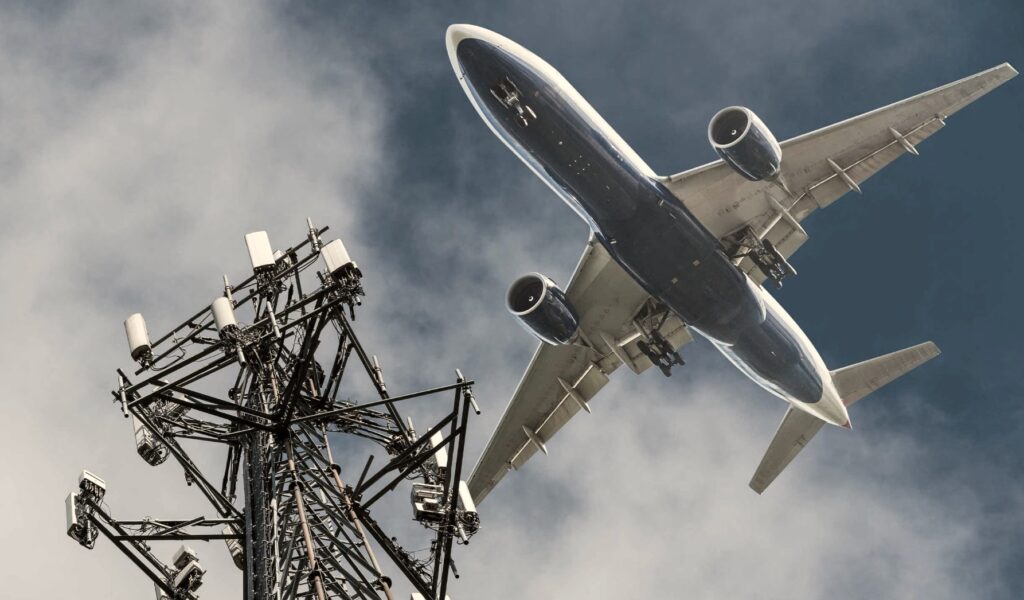
The FAA is asking aircraft manufacturers, operators, and companies that build radio altimeters to submit feedback on altimeter design and performance near 5G wireless broadband towers. (Photo: Honeywell Aerospace)
The Federal Aviation Administration is asking aircraft manufacturers, operators, and companies that build radio altimeters to submit feedback on altimeter design and performance near 5G wireless broadband towers.
The FAA issued a Special Airworthiness Information Bulletin (SAIB) on May 24, soliciting information on altimeter design and functionality, specifics on deployment and usage of radio altimeters in aircraft, and asking stakeholders to test and assess their equipment in conjunction with federal authorities.
Specifically at issue is the proliferation of 5G wireless broadband transmissions between 3.7 and 3.98 gigahertz (GHz), which is also called C-Band. C-Band wireless broadband deployment, which began in January 2022, is continuing to occur in phases for operations in the contiguous U.S. Radio altimeters operate between 4.2 and 4.4 GHz but are susceptible to interference from 5G transmissions.
5G C-band transmissions have started to expand and will likely expand further after July 1, with higher frequency transmissions closer to the spectrum allocation where radio altimeters operate. At least 19 telecommunications companies are expected to expand their 5G networks beginning in June.
Towers propagating the signal will be built throughout the US. The concern is that when operating near a 5G tower, certain radio frequencies can cause inaccurate altitude readings for certain radio altimeters, causing a risk to the aircraft and its crew while in flight.
The FAA and Federal Communications Commission are now asking operators and aircraft and equipment manufacturers to report altimeter testing data to the appropriate civil aviation authorities (CAAs) and spectrum regulators.
“We request that radio altimeter manufacturers submit receiver radio frequency (RF) selectivity, interference tolerance masks, and baseline operational specifications for each model number in production or still in use, and approximate numbers of each radio altimeter model currently in service in the United States,” the SAIB says.
The FAA makes 22 specific recommendations for gathering and submitting information on altimeter performance in environments with 5G transmissions, including that equipment makers complete an analysis of each model number either in production, supported, or still being employed, to determine the susceptibility to interference from C-band emissions, as well as “potential spurious emissions” in the 4.2-4.4 GHz band.
Altimeter manufacturers are also asked to report any instances of erroneous altimeter performance to the FAA and FCC and are asked to collaborate with aircraft manufacturers on design changes and issue guidance to operators on potential retrofit plans for radio altimeters susceptible to harmful interference.
Aircraft builders should submit the numbers of each model of altimeter installed on each aircraft currently in service in the U.S., according to the SAIB. They also should communicate with radio altimeter suppliers and the FAA to identify the susceptibility of certain equipment to C-band emissions.
Aircraft makers also are asked to test the effects of loss of function, and erroneous or misleading radio altimeter data from potential harmful interference caused by C-band emissions and evaluate the potential for harmful interference on aircraft in the manufacturer’s fleet based on aircraft architecture and radio altimeter integration.
Operators should ensure pilots are aware of potential degradation of radio altimeter capabilities and any means to compensate for in-flight radio altimeter anomalies, the SAIB says. Pilots also should be aware of potential degradation of safety systems and other equipment that rely on accurate data from onboard radio altimeters.
“Operators and pilots who experience radio altimeter anomalies should notify air traffic control, as soon as practical,” the SAIB says. “Post-flight, pilots are encouraged to submit detailed reports of radio altimeter disruptions or interference events.”
Reports and information related to 5G interference and radio altimeter performance can be submitted through the Radio Altimeter Anomaly Reporting Form available at https://www.faa.gov/air_traffic/nas/radalt_reports.